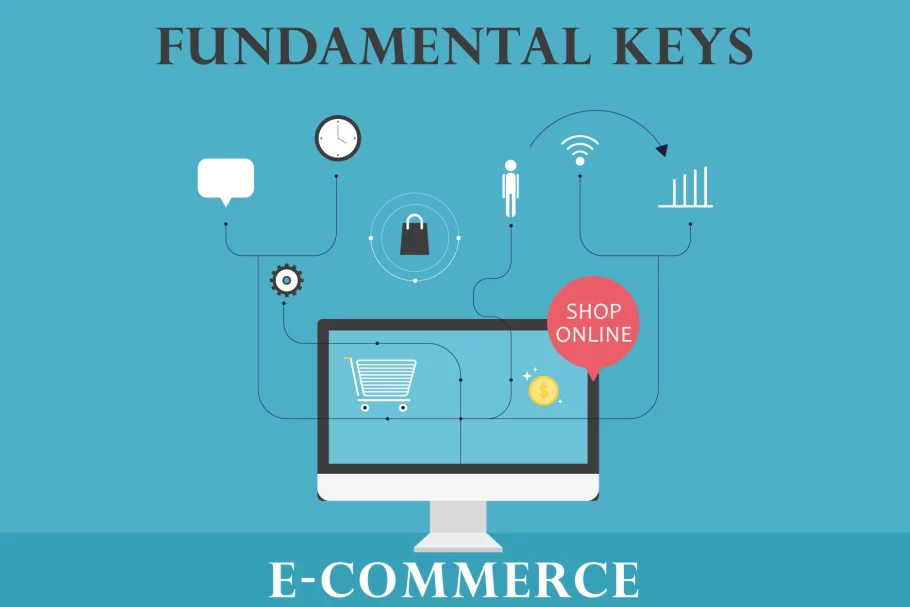Summary: In the intricate world of eCommerce, staying attuned to the fundamentals is crucial. While technology and innovation drive customer experiences, the basics still hold immense power in converting visitors into loyal customers. This article explores four essential eCommerce fundamentals that every eCommerce manager should never lose sight of.
eCommerce Essentials: The Key Fundamentals
The eCommerce landscape can be overwhelmingly complex, filled with cutting-edge technologies and evolving customer expectations. Retailers strive to provide world-class shopping experiences, leveraging advanced functionalities to meet rising demands. However, in the pursuit of excellence, it’s essential not to overlook the fundamentals. These core elements continue to play a pivotal role in transforming website visitors into loyal customers. In this article, we delve into four critical eCommerce fundamentals that every eCommerce manager should prioritize.

1. Think Fast: Optimize Website Speed
In an age of broadband internet, website speed may seem less critical. Nevertheless, it remains a vital factor in ensuring a seamless shopping experience, especially for users on slower connections. To cater to a diverse audience, eCommerce sites must be designed to load quickly, even on dial-up connections.
When constructing a website framework, designers and eCommerce teams should aim for pages that load in under 9 seconds, accommodating users with slower connections. A recommended page size falls within the range of 60-70 kilobytes (KB). With such optimized performance, websites are more likely to load within the 9-second threshold. Additionally, online retailers should steer clear of using Flash on transactional sites. While Flash may enhance artistic elements and brand presence, it can deter potential customers before they even begin exploring your store.
2. Image Matters: High-Quality Product Images
Images hold immense sway in the online shopping realm, yet they are often underestimated. To present products effectively, all images should be of the highest possible resolution, considerably larger than the original product page, and offer multiple views. By incorporating dynamic imaging capabilities, eCommerce websites can elevate the user experience through features like zoom and rotate. As a bare minimum, retailers should provide at least two additional views beyond the product page image to engage and connect with shoppers emotionally.
3. Be Guest-Friendly: Offer Guest Checkout
Consumers appreciate autonomy and flexibility in their online shopping journeys. Forcing visitors to register before making a purchase is a surefire way to send potential customers straight to your competitors. Frequently, shoppers lack the time or inclination to complete lengthy registration forms.
To mitigate this issue, always offer the option for guests to checkout without creating an account. This approach reduces customer attrition during the checkout process while still allowing customers to register after completing their purchase if they wish.
4. Above the Fold: Optimize Your Homepage
Your eCommerce homepage holds unparalleled significance within your online store. It serves as the initial touchpoint, setting the tone for the entire shopping experience. This prime real estate is where you showcase your best promotions and products to captivate visitors. Users typically follow a visual pattern of scanning a web page from top to bottom and then from left to right. To maximize the impact of your homepage, ensure that all critical content and navigation options are immediately visible, without requiring users to scroll down.
Placing your most enticing promotions “above the fold” ensures that a significant portion of your website visitors encounters them without any additional effort. Failing to do so may result in missed opportunities and reduced engagement.
In the intricate world of eCommerce, it’s easy to become immersed in cutting-edge technologies and complex strategies. However, the enduring power of eCommerce fundamentals should never be underestimated. By optimizing website speed, enhancing product images, offering guest checkout options, and optimizing the homepage, eCommerce managers can establish a strong foundation for success. These fundamentals not only improve the user experience but also contribute to higher conversion rates and customer satisfaction.
In conclusion, while the eCommerce landscape continues to evolve rapidly, the basics remain as vital as ever. By harmonizing these core principles with advanced technologies, retailers can provide a shopping experience that resonates with customers and keeps them coming back for more.






All Comments
There is definately a lot to know about this topic.
I love all of the points you have made.
I simply could not go away your web site before suggesting that
I really loved the standard information an individual provide to
your visitors? Is going to be again frequently in order to check
out new posts